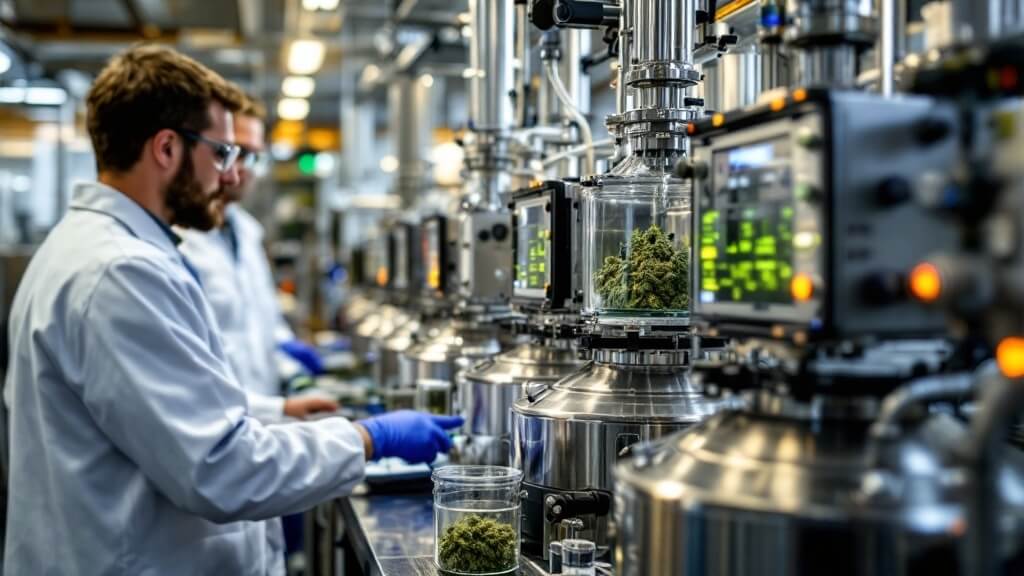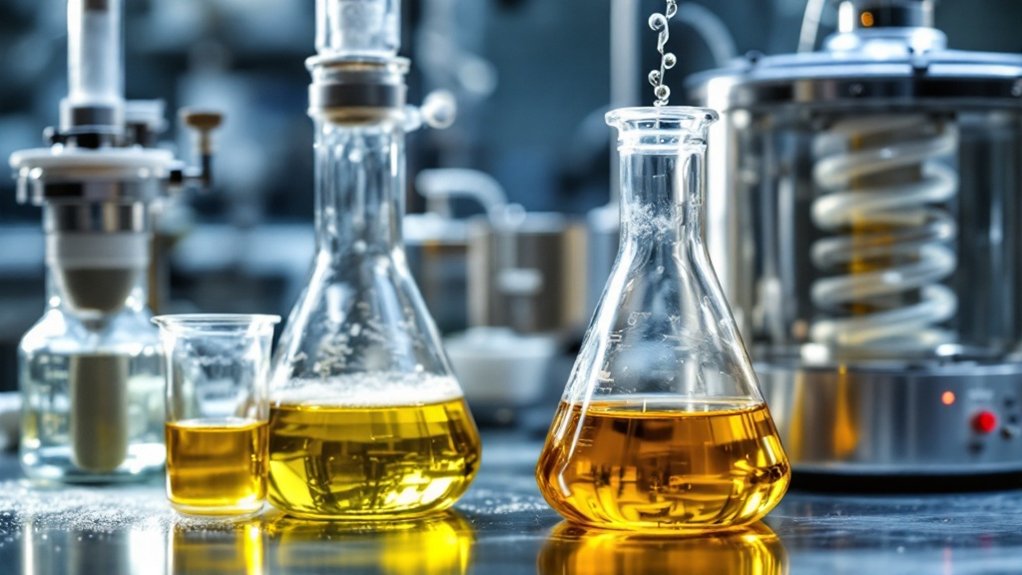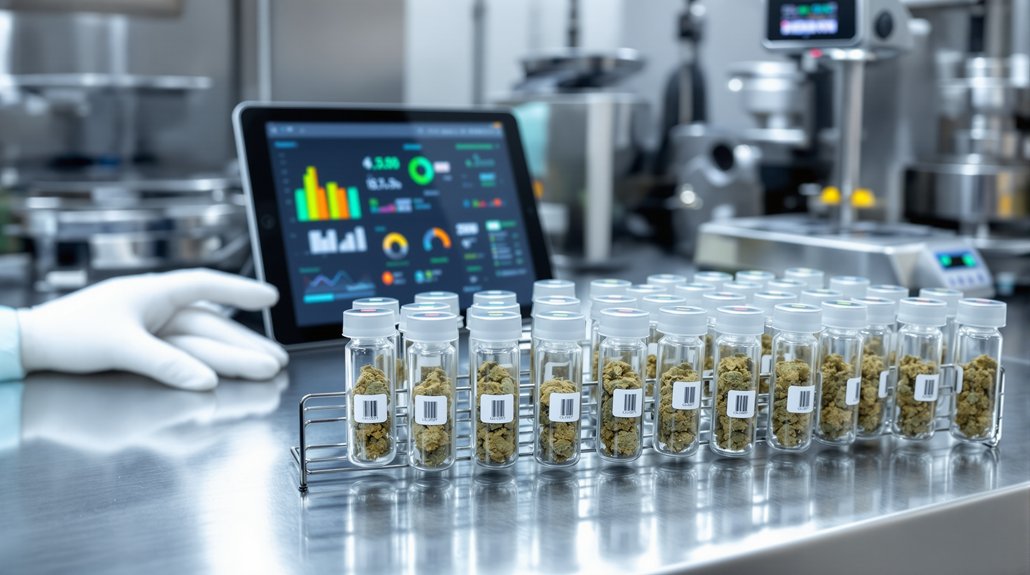Ethanol extraction offers an effective method for isolating cannabinoids from cannabis plant material. The process involves soaking cannabis in ethanol, either at room temperature or cold conditions -4°F to -40°F (-20°C to -40°C), with colder temperatures producing cleaner extracts with less chlorophyll. Post-extraction processes include winterization, filtration, and ethanol removal through evaporation systems. This method scales efficiently from small to industrial production and creates concentrates with 80-99% cannabinoid content. The technique’s versatility makes it fundamental for developing various cannabis products.

Ethanol extraction represents one of the most widely utilized methods for obtaining concentrated THC and other cannabinoids from cannabis plant material. This process employs ethanol as a solvent to dissolve the plant’s active compounds, creating a solution that can later be refined into various cannabis products. The extraction begins by soaking cannabis in ethanol within specialized vessels, sometimes utilizing equipment such as Soxhlet extractors that allow for continuous processing. Once the cannabinoids have dissolved into the ethanol, the plant material is separated through filtration techniques. Additionally, the choice of extraction methods can significantly influence the final product’s quality and consumer appeal.
Two primary variants of ethanol extraction exist: room temperature and cold temperature methods. Cold ethanol extraction has gained popularity among processors seeking cleaner extracts with minimal chlorophyll and plant waxes. The temperature typically ranges from -4°F to -40°F (-20°C to -40°C) during cold extraction, which considerably reduces the co-extraction of water-soluble compounds that can affect flavor profiles. Room temperature extraction, while simpler to implement, tends to pull more chlorophyll and plant pigments into the solution.
Cold ethanol extraction creates cleaner, less pigmented extracts, operating at -4°F to -40°F to minimize water-soluble impurities.
Following the initial extraction, processors often implement winterization—a cooling process that causes plant lipids to solidify for easier removal through filtration. The ethanol must then be separated from the extract, commonly achieved using rotary evaporators or falling film systems that apply controlled heat under vacuum conditions. These systems allow ethanol recovery while preserving the volatile terpenes that contribute to the extract’s aromatic qualities. The FDA classifies ethanol as a Class 3 solvent with low toxicity risk when residual levels remain below 5,000 ppm in the final product. Technological advancements have significantly improved the selectivity and purity of ethanol extraction methods over time, reducing post-processing requirements.
The benefits of ethanol extraction are substantial for commercial operations. The method scales efficiently from small batches to industrial production, offering a straightforward operational approach compared to alternatives like hydrocarbon or CO2 extraction. Properly refined ethanol extracts can achieve cannabinoid concentrations between 80% and 99%, making them versatile bases for various consumer products. Additionally, ethanol’s status as Generally Recognized as Safe (GRAS) by regulatory agencies contributes to its widespread adoption.
Challenges with ethanol extraction include managing its polarity, which can extract unwanted compounds, and implementing proper safety protocols due to ethanol’s flammability. The need for specialized evaporation equipment also represents a considerable investment for processors.
Despite these considerations, ethanol extraction remains fundamental to producing full-spectrum cannabis oils that preserve the plant’s natural compound profile, enabling manufacturers to create consistent, high-quality products ranging from tinctures to vape cartridges and edibles.
Frequently Asked Questions
Is Ethanol Extraction Suitable for Home Use?
Ethanol extraction is suitable for home use due to its relatively simple process and safer profile compared to other extraction methods. The technique requires basic equipment like containers, filters, and proper ventilation, making it accessible for individuals without specialized machinery.
However, users must exercise extreme caution regarding ethanol’s flammability, ensuring proper ventilation and avoiding open flames.
Despite its accessibility, practitioners should thoroughly understand safety protocols before attempting home extractions.
How Long Does Ethanol Extraction Take?
Ethanol extraction times vary considerably based on temperature and technique.
Cold ethanol extraction at -4°F to -40°F (-20°C to -40°C) typically requires approximately 10 minutes for ideal cannabinoid yield. In contrast, warm ethanol methods need only about 3 minutes per batch.
QWET (Quick Wash Ethanol) extraction takes roughly 3 minutes of soaking time in frozen conditions, while QWISO (Quick Wash Isopropyl) extraction is faster at only 20 seconds.
The sample-to-solvent ratio, desired compound profile, and post-extraction processes like winterization also influence total processing time.
What Equipment Is Needed for Ethanol Extraction?
Ethanol extraction equipment includes an extraction apparatus for soaking plant material, a centrifuge for efficient separation, and filtration systems with micron bags.
The setup requires temperature control systems for both cold and warm methods, plus recovery equipment like rotary evaporators and falling film evaporators.
Supporting equipment includes vacuum ovens, decarboxylation vessels, closed-loop systems for safety, and chillers for temperature regulation during processing.
Can Ethanol Extraction Preserve Minor Cannabinoids?
Ethanol extraction effectively preserves minor cannabinoids, especially when conducted at cold temperatures below -20°C.
This method dissolves a broad spectrum of compounds while minimizing degradation of temperature-sensitive cannabinoids. Cold ethanol limits the co-extraction of chlorophyll and plant waxes, resulting in extracts with higher concentrations of minor cannabinoids.
The process parameters, including temperature, extraction time, and solvent-to-biomass ratio, can be optimized to maximize the retention of these valuable compounds during the single-stream extraction process.









